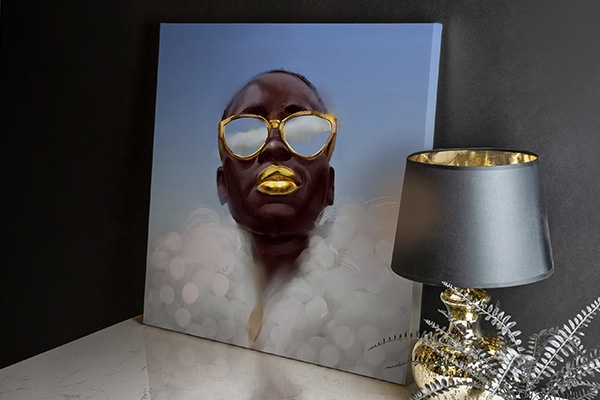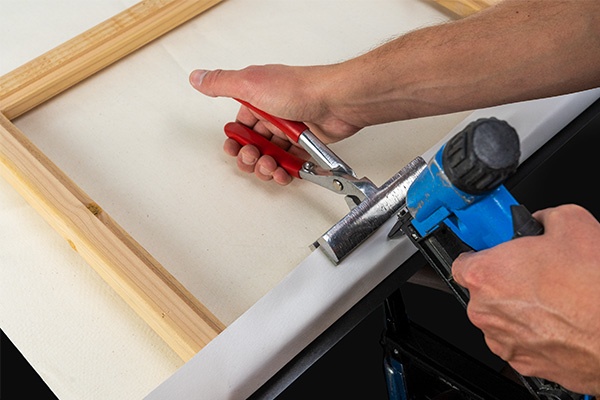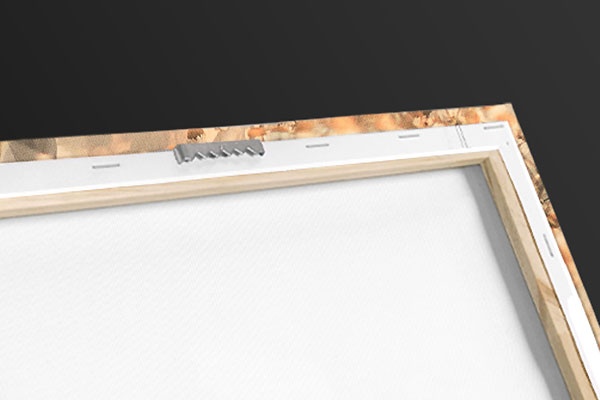Combined Nircam And MIRI Image Of The Starforming Region NGC 3324 In The Carina Nebula Wall Art
24″ × 8″ Stretched Canvas Print
About the Artwork
Combined Nircam And MIRI Image Of The Starforming Region NGC 3324 In The Carina Nebula - Item # 2941747
A never-before-seen view of a star-forming region in the Carina Nebula. Captured in infrared light by the Near-Infrared Camera (NIRCam) and Mid-Infrared Instrument (MIRI), by the James Webb Space Telescope, this combined image reveals previously invisible areas of star birth. What looks much like craggy mountains on a moonlit evening is actually the edge of a nearby, young, star-forming region known as NGC 3324. Called the Cosmic Cliffs, this rim of a gigantic, gaseous cavity is roughly 7,600 light-years away. The cavernous area has been carved from the nebula by the intense ultraviolet radiation and stellar winds from extremely massive, hot, young stars located in the center of the bubble, above the area shown in this image. The high-energy radiation from these stars is sculpting the nebula's wall by slowly eroding it away. NIRCam, with its crisp resolution and unparalleled sensitivity, unveils hundreds of previously hidden stars, and even numerous background galaxies. In MIRI's view, young stars and their dusty, planet-forming disks shine brightly in the mid-infrared, appearing pink and red. MIRI reveals structures that are embedded in the dust and uncovers the stellar sources of massive jets and outflows. With MIRI, the organic, soot-like material on the surface of the ridges glows, giving the appearance of jagged rocks. This period of very early star formation is difficult to capture because, for an individual star, it lasts only about 50,000 to 100,000 years - but Webb's extreme sensitivity and exquisite spatial resolution have chronicled this rare event. NGC 3324 was first catalogued by James Dunlop in 1826. Visible from the Southern Hemisphere, it is located at the northwest corner of the Carina Nebula (NGC 3372), which resides in the constellation Carina. The Carina Nebula is home to the Keyhole Nebula and the active, unstable supergiant star called Eta Carinae.
About the Artist
Stocktrek Images
The Stocktrek Images collection is home to incredible images from earth and beyond. From military photos to stunning images of the moon, find the perfect image for your space in this expansive collection of flight-inspired pieces.
Product Specifications
- Expertly Handcrafted
- 1.25" Solid Wood Stretcher Bars
- Artist-Grade Canvas
- Fade-Resistant Archival Inks
- Hanging Hardware Pre-Installed
- Width: 24″
- Height: 8″
Item # 2941747
Product Features
Elevate any room with our handcrafted stretched canvas gallery wraps. Printed with archival inks and wrapped around a 1.25” inch solid wood stretcher bar, our giclée big canvas art prints are a timeless option for any decor style or space.

Our giclée canvas art prints are produced with high quality, UV-resistant, environmentally-friendly, latex inks and artist grade, polycotton canvas. We pride ourselves on color accuracy and image clarity to ensure your new canvas wall art lasts for years to come.

Assembled in the USA, each of our 1.25” inch gallery wrapped canvas art prints is stretched and stapled by our highly skilled craftspeople. Each canvas print is carefully handcrafted to ensure taut canvas wraps and clean corners for outstanding quality and durability.

Our handcrafted stretched canvas prints include sawtooth hangers for an easy and secure installation.
Product Reviews
Frequent Questions
Recently Viewed
Clear Recently Viewed?
Are you sure you would like to clear your recently viewed items?
Pricing policy: The full list price is a price at which we have offered the product for sale; however, we may not have sold the item at that price.

